In this experiment, we are going to measure the impact of using microwave water on plants.
Using this experiment let’s see:
- How plants react to microwaved water.
- How different liquids affect its growth.
- Kids can learn about plants’ health.
Let us explore some plant science today and have fun.
Impact of Microwaved Water on Plants
Hypothesis
A plant fades away when it receives microwave-heated water every day. i.e. Microwaved water
Let us see how the hypothesis works out.
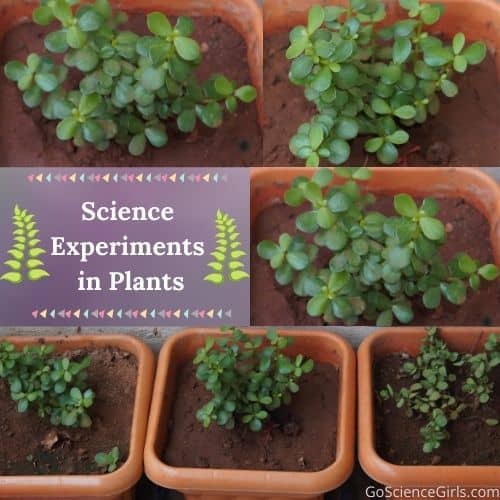
Things required to perform the Experiment
Our experiment requires materials that are easily available in-home:
- Microwave
- Water
- Any kind of plants for experimenting
- Tap water
- Rice water
Preparations
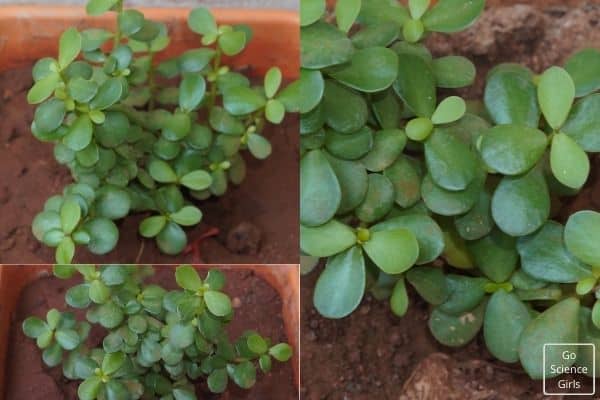
- Arrange your experimental table on your balcony or any open place.
- Arrange the fresh plants from the garden on the experiment table neatly in a row.
Primarily arrange all this so that plants do not fade away or get dry due to other reasons apart from our experiment supplies.
Instructions for the experiment
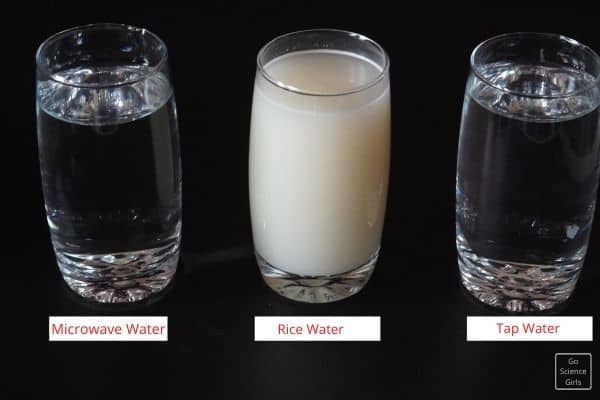
Step 1:
- Take the required amount of water for experimenting the plants.
- Make sure the water is not contaminated with any other substances or chemicals because the contaminants may change the result.
- Each serve it’s necessary to pour one or two mugs of water for each plants.
Step 2: Heat the water using Microwaves
- Take required amount of water in a glass bowl and keep it inside the microwave for heating. Switch on the microwave power plug.
- Set the time for heating according to the microwave capabilities.
- Once the process of heating the water , take out the glass bowl which is very hot using heat proof microwave gloves.
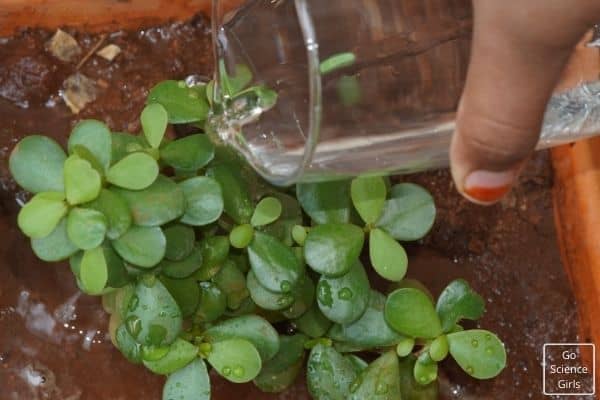
Tip: Please maintain the quantity of water to heat according to the microwave capacity measurement.
Step 3: Watering Plants
- Now Pour one or two mugs of microwave heated water to the plants every day without fail by following the step 1 and 2.
- Remember quantity of water depends on the plant size taken for the experiment.
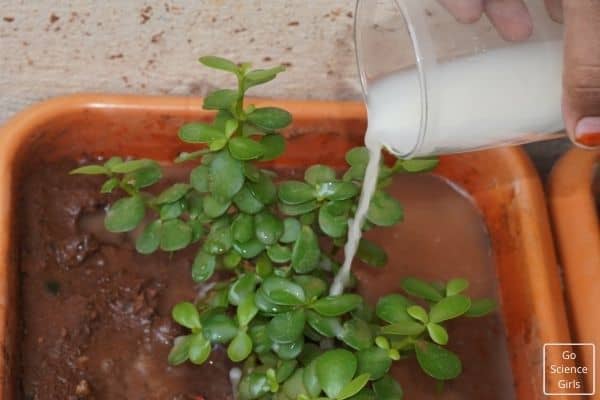
Take two more plants for experiment using rice water and normal tap water. Let’s check how plants react to different liquids.
Step 4:
- Already experiment plant number 1 with microwave water.
- Now start experimenting other two plants with rice water and normal tap water respectively.
Note: Rice water is obtained from the soaked rice before cooking the rice. Also obtain the rice water by washing the rice. Everyday feed these water to the plants according to the label along with the microwave heated water.
If season supports, let’s also experiment plants with the rain water.
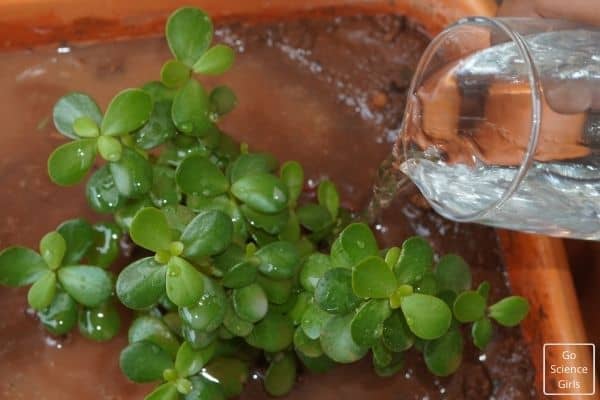
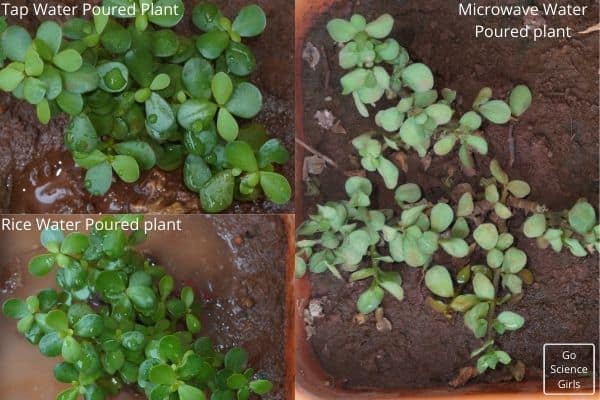
Observation and results
- Plants shows difference in their health after receiving different types of water for few days.
- Plant that are poured with microwave heated water fades away slowly whereas the plants with rice water, rain water and normal tap water grows healthily.

On seeing faded plants seems disappointing, but here is the science behind this experiment. Microwave heated water is harmful for the plants life .
Is there any reason or little science that could explain our observations and results in our experiment!?
Yes, there are clear cut reasons for why some plants faded away whereas others grew up nicely.
Let’s see how the microwave heated water affect the plants blooms:
- The treatment of water by microwaves causes drastic changes in conductivity, pH and mobility of water molecules.
- Microwaves also has the ability to produce changes in absorbency of the plant cell membrane.
- In addition, it also inhibits plant cell growth rate, interacts with the ions and organic molecules.
- The main culprit behind all these consequences by the microwaves is the radiation. The effect of radiation makes the plant lost its blossom and finally fades away.
Following are the observation noted with this experiment:
- Plants that are experimented with salt water does not allow the plant roots for osmosis which happens through the plant tissue. As a result the salt draws water out of the plant, dehydrates and eventually kills. Thus, the plant fades away when given with salt water.
- Plants that are experimented with rice water and tap water shows positive results. Compared to tap water, plants treated with rice water shows good growth.
- This is because rice water works as effective as NPK fertilizer to promote a healthy and surprising plant growth in terms of number of leaves and higher biomass.
- Rice water make all this happen by supplying essential nutrients of sodium and potassium which are very much essential to a plant.
- Lesser growth of the plants that are treated with tap water is mainly due to high concentration with the salts of magnesium and calcium which are not good for plants growth. These concentrated salts cause the plant dehydrate as they take out water from the root structures. Hence, there is slower growth rate in plants treated with tap water.
Conclusion
- Rain water and bottled spring water are great at amazing growth rate in plants.
- The sugar and salt water actually hurts plant growth.
- Distilled and tap water may not hurt the plant growth but the growth rate may decrease when compare to rain and spring water.
Safety: As using electronic equipment like microwave, kids need to be very careful. It is better to ask for adult help while dealing with microwave. Be sure to use heat proof microwave gloves to avoid unnecessary burns caused by the superheated equipment. However, adult supervision is mandatory.
Microwaves make things hot. It heats the water beyond the actual boiling point of water by passing tiny waves into the water at random locations causing the molecules of water vibrate. Eventually makes the water molecules spin around two opposite poles (referred as dipole) rapidly. This all happens just because of the radiation which imparts energy to the water molecules to move back and forth exactly at the frequency of microwaves.
It is not safe to microwave water. It is always a bit safe to boil water in a plate when using microwave. Because the hottest point is located at the bottom of the plate whereas in case of glass the hottest point is located in the water. Glass does not get heated much i.e. at least not much and radiates some heat energy to the surroundings. This is the reason heating water in a glass when using microwave is not safe.
Yes, absolutely! If you want to purify water, heat it in microwave long enough to eliminate gems and microorganisms. Microwaves don’t kill bacteria directly, instead generates heat that kills bacteria present in the water. Microwaves are great time-saver and kill bacteria when water is heated at safe internal temperature.
Microwave was invented by an American Engineer Percy Spencer. He invited modern microwave after World War II by using a technology that is developed during the war called ‘Radar Technology’. It was first sold in 1946. In the beginning, people were scared of using it because of the radiation it emits and the other concerns were too big in size and expensive. Eventually, the fears faded away since the technology improved.
Boiled water can also be used to kill weeds and prevent plant diseases around the garden. In fact, treating plants with hot water works effectively and sounds like one of the best and crazy home-made remedies.
Gardeners generally boil water if they believe it contains chemicals or impurities that may be dangerous to the plant health. Theoretically, hot or boiling water kills most contaminants and makes the water safer for plants. But the boiled water must be cooled and bring to the room temperature before watering to plants.
